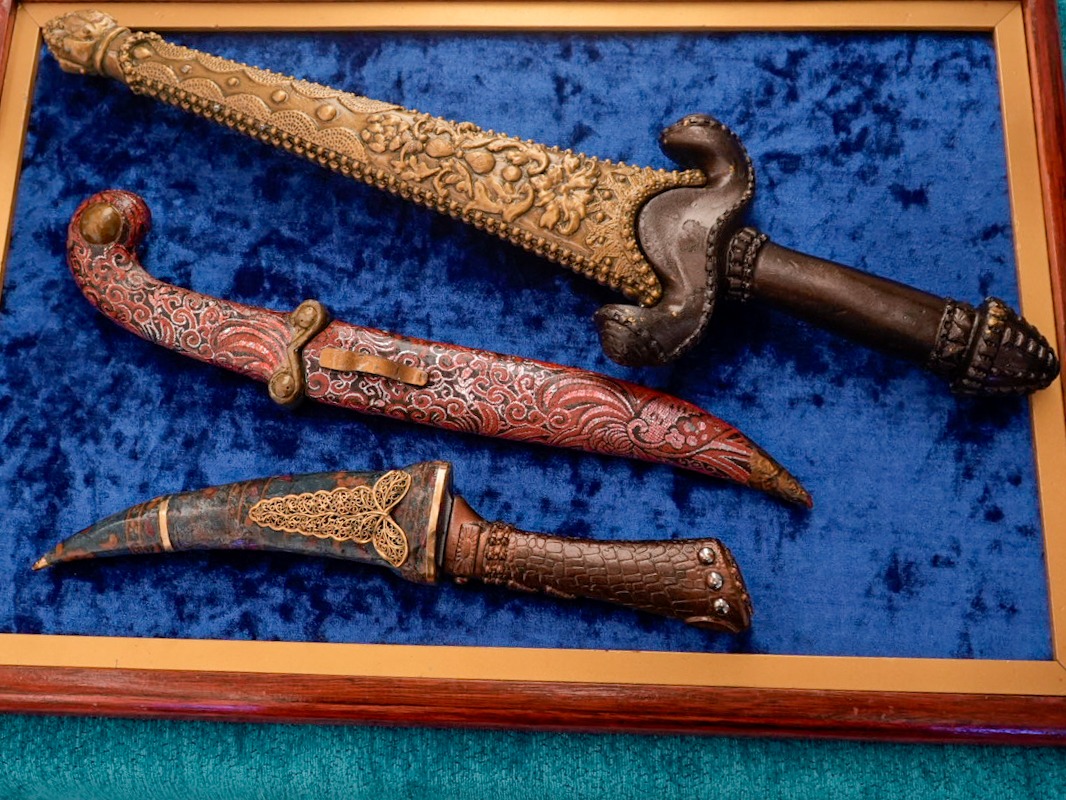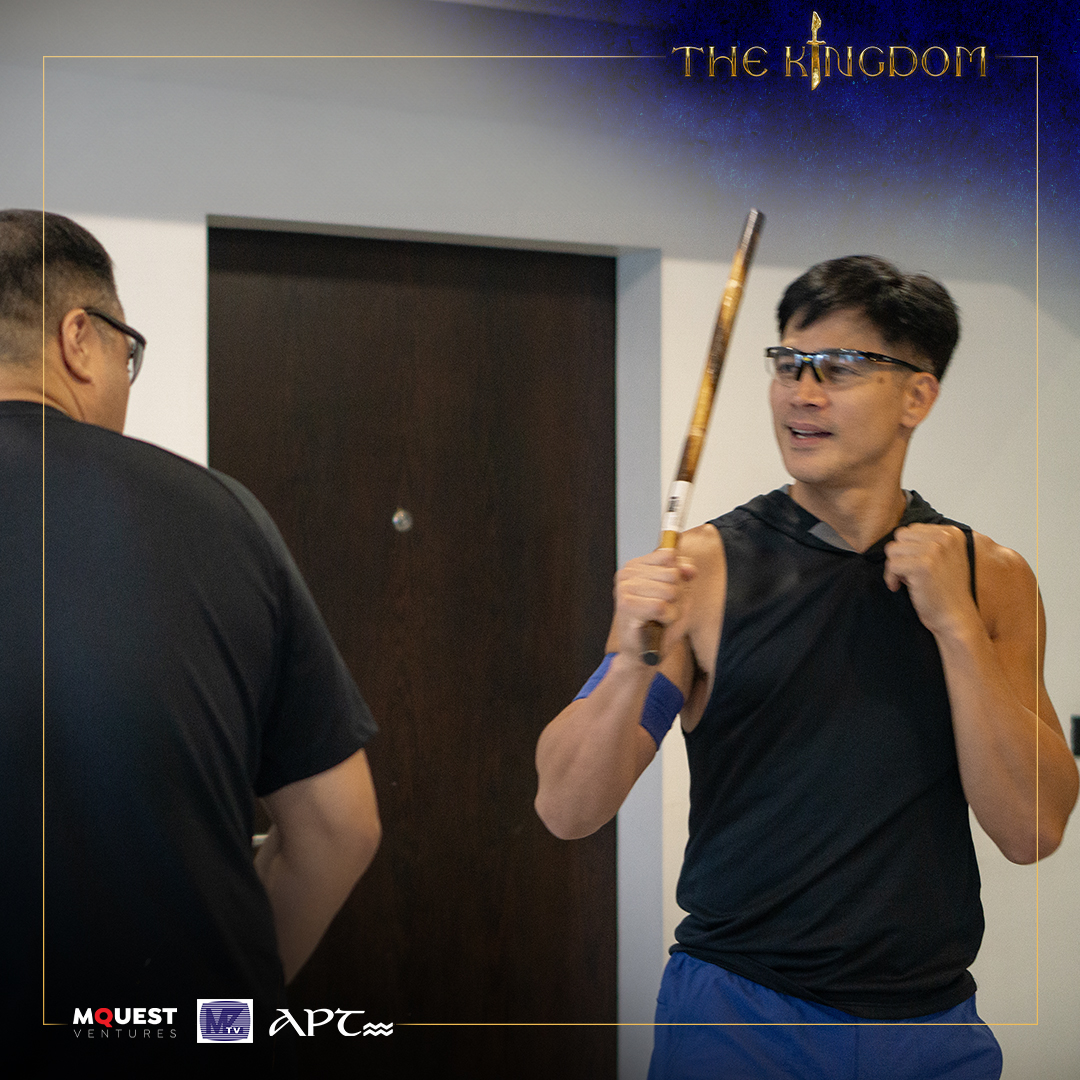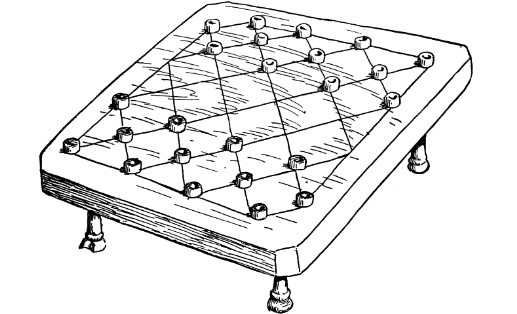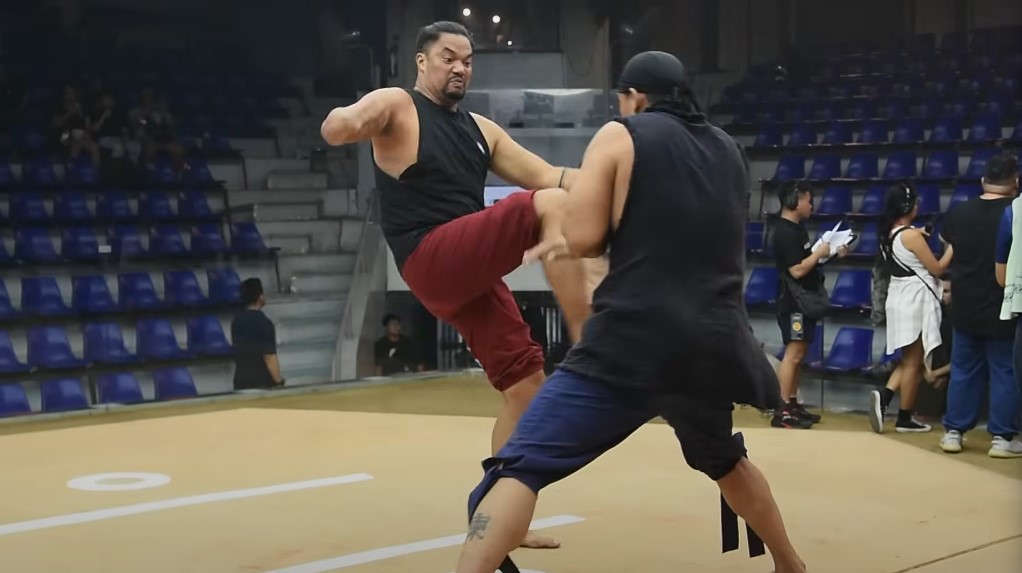What would have been the top sports in the Philippines if the country was never colonized?
It's an intriguing question, and part of the fantasy posed by "The Kingdom"--the Metro Manila Film Festival (MMFF) entry co-produced by MQuest Ventures, APT Entertainment, and MZet TV Productions.
MMFF co-Best Director Michael Tuviera, along with co-writer Michelle Ngu, and MMFF Best Production Design winner Nestor Abrogena Jr. envisioned a country that was ushered into the modern age without the colonial influences of Spain, the United States, and Japan.
What would we be good at then?
So in the spirit of what if, let's speculate on the sports that could have risen in the contemporary Kingdom of Kalayaan.
[ALSO READ: Uncolonized Philippines: Highlighting the sports in MMFF entry 'The Kingdom']
Arnis--more than just a national sport
You might be asking, isn't arnis already the Philippine national martial art and sport? And isn't arnis a Spanish term? And what about kali and eskrima?
In the current age, arnis, kali, and eskrima all refer to the indigenous Filipino martial art--which showcases both armed and unarmed combat. The primary weapon is either one or two sticks. Swords and knives can be used as well, along with hand-to-hand techniques.
The difference, might lie in the geography.
Historically, arnis is assumed to have derived from the Spanish word arnés or armor, hailing from the elaborate armor costumes in Moro-Moro plays. It's widely used in Luzon, which was mostly governed and colonized by Spain.
Eskrima is also a Spanish term for fencing. Meanwhile, kali is suggested to have derived from the Moro blade kalis--a double-edged sword that is wavy near the handle and straight towards the tip.

A look at the blades used in "The Kingdom". | Photo: MQuest Ventures, APT Entertainment, MZet TV Productions
But the concept of self-defense certainly exists before the Spaniards came, as testified by governor Francisco de Sande in his 1577 report, "Relation and description of the Phelipinas Islands".
"The Indians of this country are not simple or foolish, nor are they frightened by anything whatever. They can be dealt with only by the arquebuse, or by gifts of gold or silver... They kill the Spaniards so boldly, that without arquebuses we could do nothing. This was the reason that Magallanes, the discoverer of these islands, was killed," he wrote.
"All those who have been killed since the coming of Miguel Lopez de Legazpi received their death through lack of arquebuses. The Indians have thousands of lances, daggers, shields, and other pieces of armor, with which they fight very well."
In an uncolonized Philippines, arnis might have been certainly elevated to a revered sport--akin to the karate of Japan and taekwondo of Korea. It could have also been a must-learn skill, perhaps a requirement for the military and other security forces in the fantastical Kingdom of Kalayaan.
All you need after all, is an inexpensive rattan stick. Those who seek to improve their strength and grip can further hone their skills with the much heavier hardwood kamagong and magkuno--which can also be presented as ceremonial weapons.

Piolo Pascual practicing arnis for his role as Sulo in "The Kingdom". | Photo: MQuest Ventures, APT Entertainment, MZet TV Productions
Pintados as the mark of rank
In "The Kingdom", citizens were featured with markings on their bodies. The royal family, particularly the king, had tattoos all over his body as a sign of his rank.
It's likely a nod to the Boxer Codex, a manuscript which illustrates life in pre-colonial Philippines.
One illustration, as historian Ambeth Ocampo noted, showed the "Pintados" of the Visayas "who were not painted but tattooed all over down to their buns."
In an uncolonized Philippines, one might imagine the concept of Pintados transferred to the idea of ranking in sports such as arnis. Instead of colored belts, maybe a lakan or a dayang would be hailed depending on the number and kind of markings on their bodies.
Dama and the feeling of childhood
"The Kingdom" showcased a scene of Lakan Makisig Nandula (played by Vic Sotto) and Dayang Lualhati (Sue Ramirez) playing a board game of sorts made of luxurious hardwood.
The concept is similar to checkers, where pieces are taken.
While most of the pieces are flat "stones", there are certain figures that are more elaborate.
This may be harkened to Dama--a Filipino variant of checkers, as described by American anthropologist Stewart Culin in "Philippine Games."
"The moves are the same as in ordinary draughts, except that a king has the power of passing over any number of squares in a straight line, taking all the men in its way. It cannot cross a square, however, nor can it return on another line until after the opponent has made another move," he wrote.

An illustration of Dama, or Filipino checkers. | Photo: Philippine Games, Stewart Culin
In an uncolonized Philippines, one imagines this may have risen to the popularity of the Go board game in Japan. Or perhaps, dama might even be a regular mobile game--developed for kids and adults alike to play in fantastical settings.

Vic Sotto and Sue Ramirez in "The Kingdom". | Photo: MQuest Ventures, APT Entertainment, MZet TV Productions
Cockfighting and the concept of bloodsport
"The Kingdom" showcased an intriguing concept--cockfighting has progressed to human bloodsport.
So just like how martial arts are highlighted in the UFC and in ONE Championship, "cockfighting" also has an octagon. There's an announcer ready to hype things up. There are coaches on either side of the ring.
But the fighters are not the roosters. These are men, attached with blades or talons at the wrist, ready to fight to the death--or until someone yields.
No notes. It's an interesting idea--perhaps there would be a "legal" and "clean" version of a mixed martial arts tournament or professional promotion in the Kingdom of Kalayaan.
Even boxing would remain popular, if the existence of the Francisco Guilledo is any indication. He was the Philippines' first flyweight champion hailed in 1922. You might know him as Pancho Villa.
"Cockfighting" would be relegated as a semi or illegal event, with plenty of money at stake.

Actors rehearsing for their scene in "The Kingdom". | Photo: MQuest Ventures, APT Entertainment, MZet TV Productions
Yoyo and the displays of trickery
Hear us out.
The yoyo is actually a Philippine invention.
Ocampo noted that a Pedro Flores in the 1920s, working as a houseboy for an American household in California, created a crude version of the yoyo to amuse his young ward.
This was noticed by an H.B. Preston, who eventually bought the rights from Flores, developed new tricks with it, and mass produced the toy.
Technically, this all happened during the American colonization.
But hey, if a Filipino mind came up with it, imagine how it might have grown in an uncolonized local setting.
What about football?
Football is undoubtedly the number one sport in Southeast Asia--even in Thailand, a country that was never colonized.
So yes, it's quite plausible that the sport could also soar in popularity in what would have been an uncolonized Philippines.
Historically, football was introduced to the region by British merchants and soldiers. In the Philippines, it can be traced to as far back as 1985, some three years before war broke out between the Spaniards and the Americans.
"The Kingdom", while uncolonized, noted traces of trades with India and China. It's not too far-fetched to imagine that the Kingdom of Kalayaan could still have welcomed the concept of football.
So what happens to basketball?
So funny enough, basketball was part of one opening scene in the "The Kingdom", as a kid in a barrio shot a ball into a makeshift hoop.
Sports writer Rafe Bartholomew wrote in his book "Pacific Rims" noted how American nation-building in the Philippines focused a lot on education. Playgrounds, gyms, and YMCA were built. A handbook for physical education also emphasized basketball.
Ironically, this originally catered and focused on girls... as emphasized by a photo shared by Ocampo.
Given that "The Kingdom" has embraced modern influences such as suits and foreign cars, it's not too far-fetched either to imagine that the NBA would also take hold in the Kingdom of Kalayaan.
Just maybe not as crazy as we are about it now.
What do you think of the sports that would arise in an uncolonized Philippines?
"The Kingdom" is part of the MMFF, which is showing in theaters until January 7, 2025.